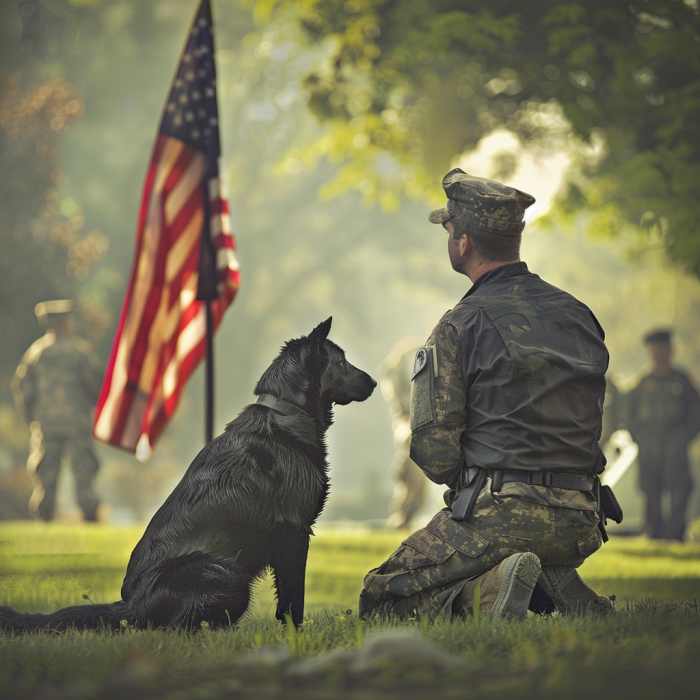How Do Military Service Animals Contribute to Memorial Day?
MAY 20, 2024

The role of military dogs, for instance, is a topic deserving extensive exploration. These canines are trained rigorously from an early age, undergoing selection protocols emphasizing genetic predispositions favorable for roles in scent detection, bomb identification, and patrol. The genetic components underpinning their olfactory capabilities are of particular interest. Canines possess approximately 220 million olfactory receptors, compared to a human's 5 million, making them extraordinarily adept at scent detection. The breeding processes focus on enhancing these inherent traits, ensuring that only the most physiologically and behaviorally equipped dogs are deployed.
From a nutritional standpoint, the dietary requirements of military service animals are meticulously calibrated to bolster their comprehensive abilities. These diets often incorporate high-protein content to sustain muscle mass and energy levels, imperative for the high physical demands placed on these animals. Furthermore, nutritional strategies aim to enhance cognitive functions, leveraging nutrients such as omega-3 fatty acids, which have been shown to support brain health.
The psychological well-being of these service animals is another crucial aspect requiring attention. Recent studies have illuminated the neurological impact of high-stress environments on canines, highlighting the incidence of post-traumatic stress disorder (PTSD) in dogs. These findings necessitate the implementation of behavioral interventions and therapeutic approaches tailored to alleviate symptoms and facilitate reintegration into non-combat settings.
As we commemorate Memorial Day, let us also consider the evolutionary dimensions of animal domestication as it pertains to military service. The symbiotic relationship between humans and service animals has deep evolutionary roots. Early domestication of canines, dating back approximately 14,000 years, was driven by mutualistic benefits, including enhanced hunting efficacy and protection. This long-standing partnership has evolved into specialized roles within contemporary military frameworks.
In summary, Memorial Day offers a reflective opportunity to appreciate the multifaceted roles of military service animals. Their contributions, underpinned by advanced genetic selection, nutritional optimization, and psychological considerations, highlight the interdisciplinary nexus of veterinary science and evolutionary biology. As we honor our human heroes, let us also remember and celebrate the non-human heroes who have shared in the trials and tribulations of military service.
More in Science
May 20, 2024
How Do Military Service Animals Contribute to Memorial Day?
March 19, 2024
How Does Easter Affect Our Canine Companions? A Veterinary Insight
March 18, 2024
How Can Sniffing Games Enhance Your Dog's Cognitive Health?
March 14, 2024
How to Safely Celebrate Easter with Your German Shepherd
February 29, 2024
How Can Understanding Schnauzers Improve Their Quality of Life?
February 13, 2024
Ensuring Your Dog's Safety and Happiness on Valentine's Day
January 24, 2024
Comprehensive Insights into German Shepherd Health and Behavior: A Veterinary Neuroscience Perspective
January 23, 2024
The Rottweiler: A Veterinary and Behavioral Analysis